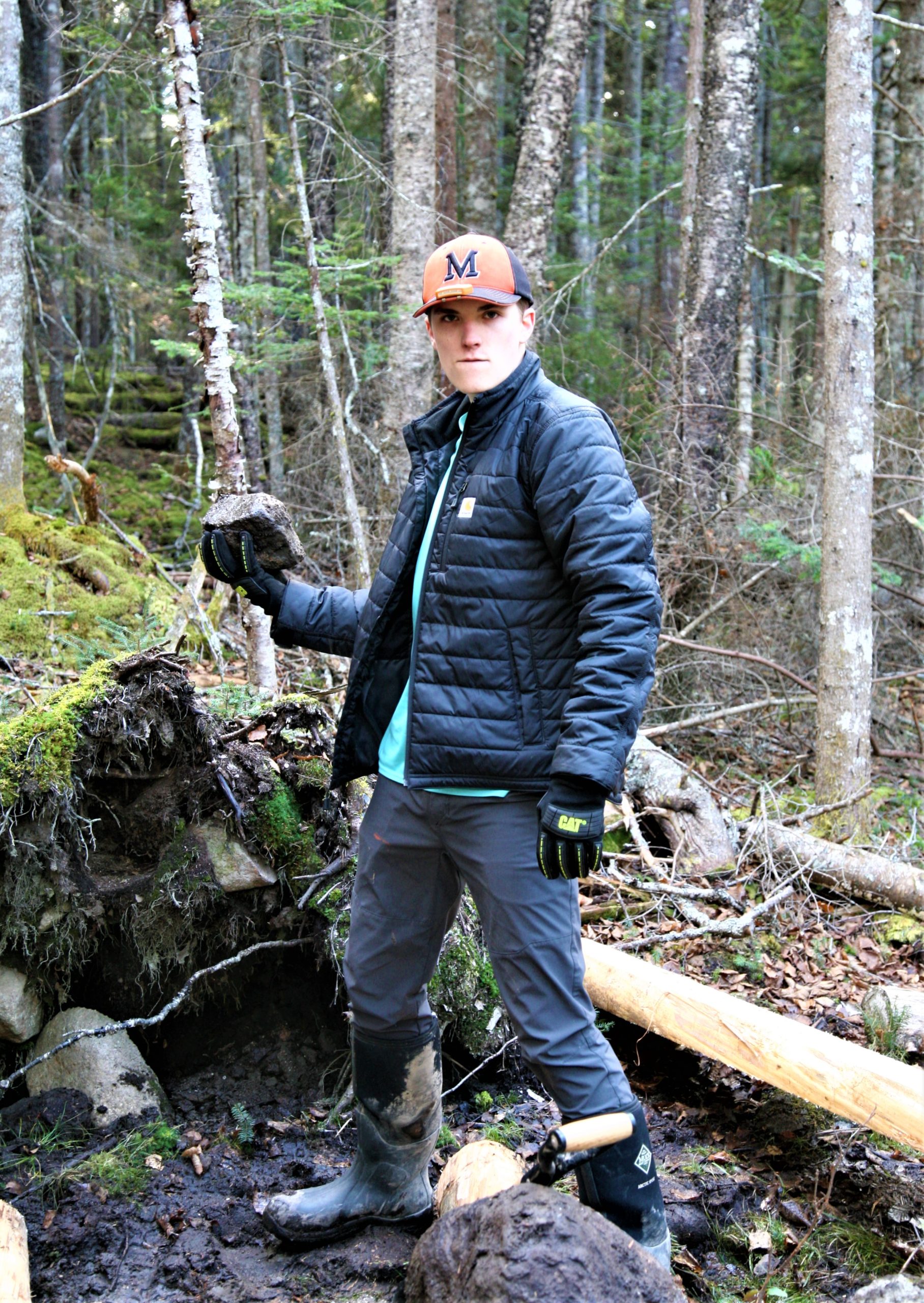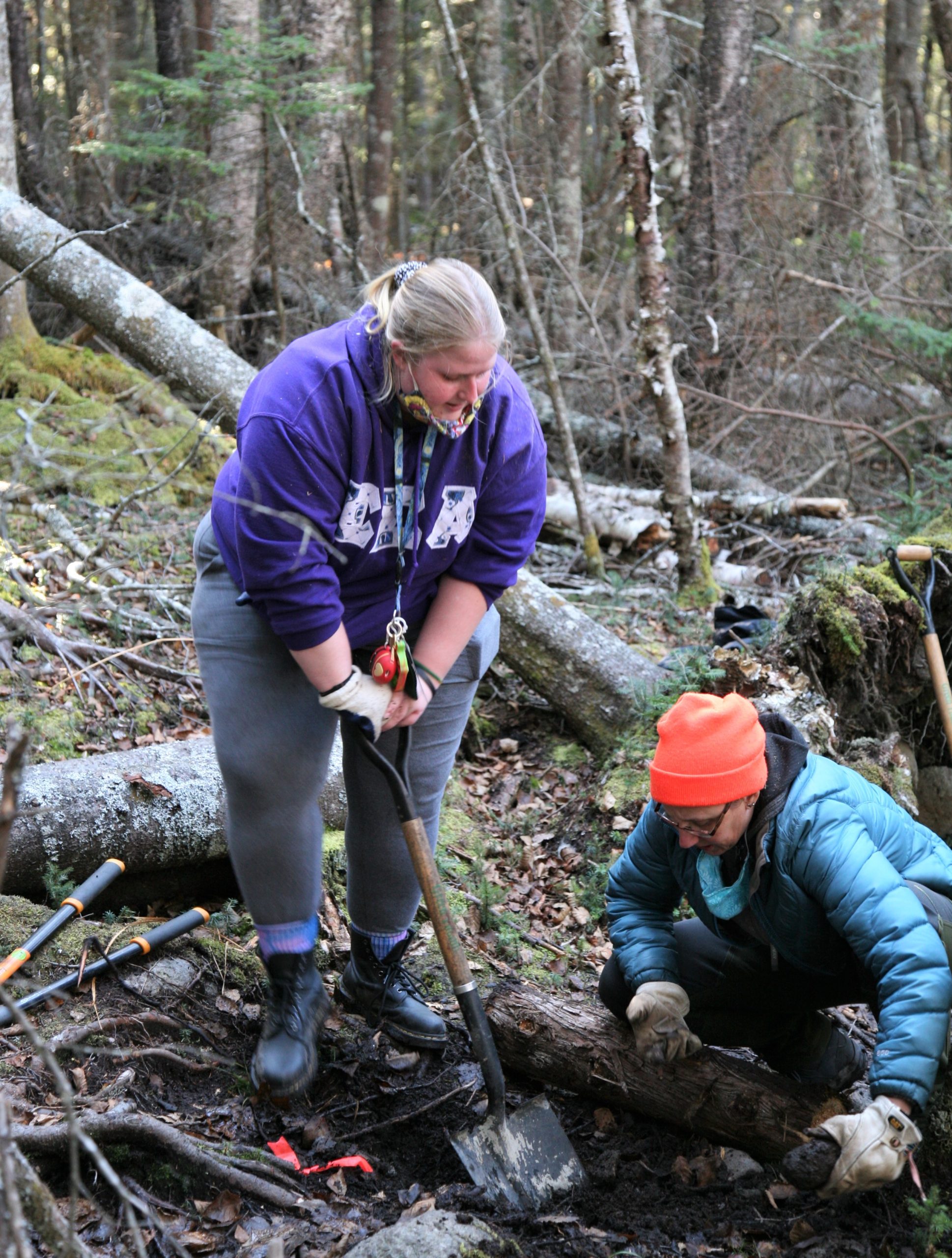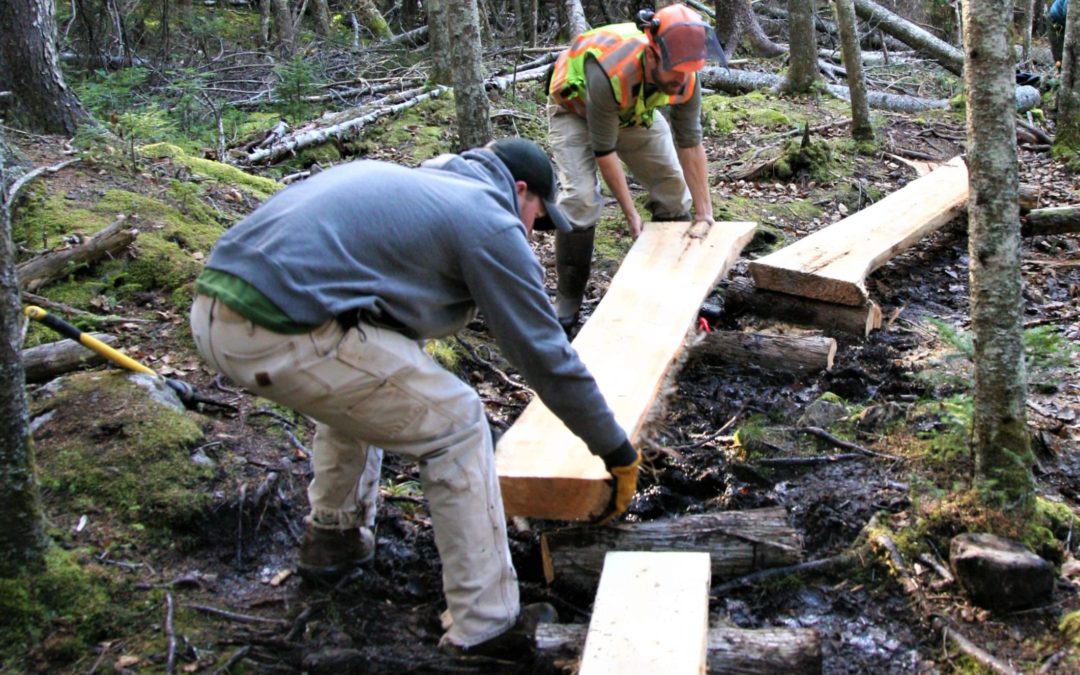That fine clay underlies our beautiful Ingersoll Point in South Addison. Just a few inches beneath those lovely green mosses and the tree roots (that always reach out to trip you up) is a layer of this glacial powder – grey clay so densely deposited that water penetrates only very slowly. With each rainstorm, water pools in low lying areas on the trails and creates a soggy mess for each hiker to slog through.
In early November, DCC volunteers and fearless students from the UMaine Machias Recreation and Tourism Management class assembled to protect Ingersoll Point’s shallow soils from further mastication. Armed with shovels, loppers, and pick axes and led by stewards Kyle Winslow and Cam Leavitt, we advanced on an unusually sodden zone on the Adler Trail. The students carried in thick cedar boards and logs to span the ankle-deep pools of mud and water. Readily available, glacier-deposited rocks stabilize the bottom logs. In turn, those logs raise the cedar boards above the wet soil. The UMM students then hammered in 10” spikes to secure the assembled components together. These bog bridges at Ingersoll will help protect our fragile soils, stabilize human-caused erosion, and create a much more pleasant (and cleaner!) hiking experience for you.
We welcome anyone who revels in the art of getting dirty to join DCC’s stewardship volunteers in the near future. You can contact our new Stewardship Director, Ryan at ryan@downeastcoastalconservancy.org.





